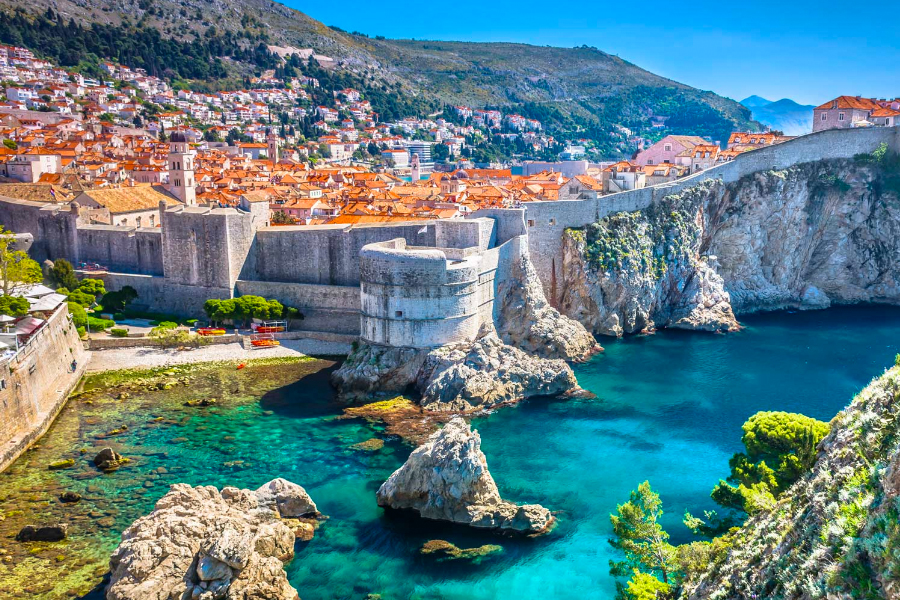The capital of the Croatian region of Istria is Pula, one of the country’s four historical and cultural regions. Many people consider this city to be Croatia’s best-kept secret, and with good cause.
Located at the tip of the southernmost Istrian peninsula, it is a bustling port city. Popular attractions include the town’s protected harbor, fragrant pine forests, beach cafes, and abundance of high-quality dining options. It’s the kind of place where you can get lost in the charm of its narrow, cobblestone alleyways while sipping wine and feasting on fresh seafood. It’s not far from the Italian border (interesting fact: Istria was an Italian province during the early 20th century). Amazing views of the Adriatic Sea may be seen from here.
Located near the city of Pula on the southern tip of the Istria peninsula in western Croatia lies The Colosseum in Pula Croatia, a Roman amphitheatre. About 230 Roman amphitheatres are thought to be operational today in their original settings. Many people claim that the Pula Arena happens to be the only residual Roman amphitheatre with four side towers and with all three Roman architectural orders entirely conserved. Because of its unique feature, the arena stands out from others of its kind. It has been claimed that the famed Coliseum in Rome has lost almost two-thirds of its original construction due to the passage of time.
Building the Seating Stands for the Amphitheater
The Pula Amphitheatre is more popularly known as an Arena because to the sand that has been used to fill the construction ever since Roman times. When Pietas Julia (now Pula) was the provincial centre of Roman control in the first century AD, that’s when the city built its arena. The city went by a different moniker back then. Despite popular belief, the monument was not built by the same Emperor Vespasian who oversaw the construction of the Coliseum. However, this notion has some data to back it up. The finding of a coin from this emperor’s time period in the malting could have sparked the event. The city of Pula is located on the Via Flavia, a Roman road built by Emperor Vespasian to link the regions of Trieste and Dalmatia.
Entertainment options from the past and the present coexist here.
The Pula Arena, like other amphitheatres in the Roman Empire, was used for gladiatorial competitions. Until Emperor Honorius banned brutal battles from the Pula Arena in the fifth century AD, it served this purpose. Despite this, until the second half of the seventh century AD, the amphitheatre was still used for staging battles between captives, especially those who had been sentenced to death. There are even rumours that a Christian named “Germanus” was beheaded in this very amphitheatre for his faith in Christ. The Pula Arena was built in the Middle Ages and was used for both regional fairs and tournaments between knights.
There is still a wide range of events held in the Pula Arena. Founded in 1954 as the Festival of Yugoslav Film, the “Pula Film Festival” has since grown to become one of the world’s most distinguished celebrations of cinema. In addition to sporting events, the Pula Arena has hosted live musical concerts. Famous artists including Luciano Pavarotti, Jose Carreras, and Sting have all performed there before. Although these spectacles are nothing like the horrific gladiatorial fights of ancient Rome, they serve the same purpose of entertaining the masses. As a result, the Pula Arena continues to serve the same function for which it was originally built by the Romans.



